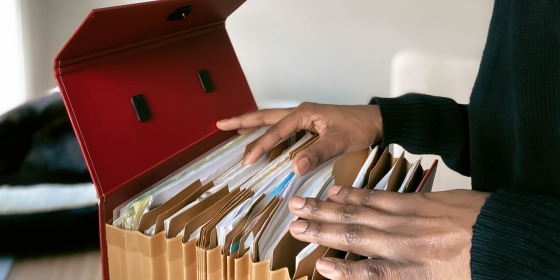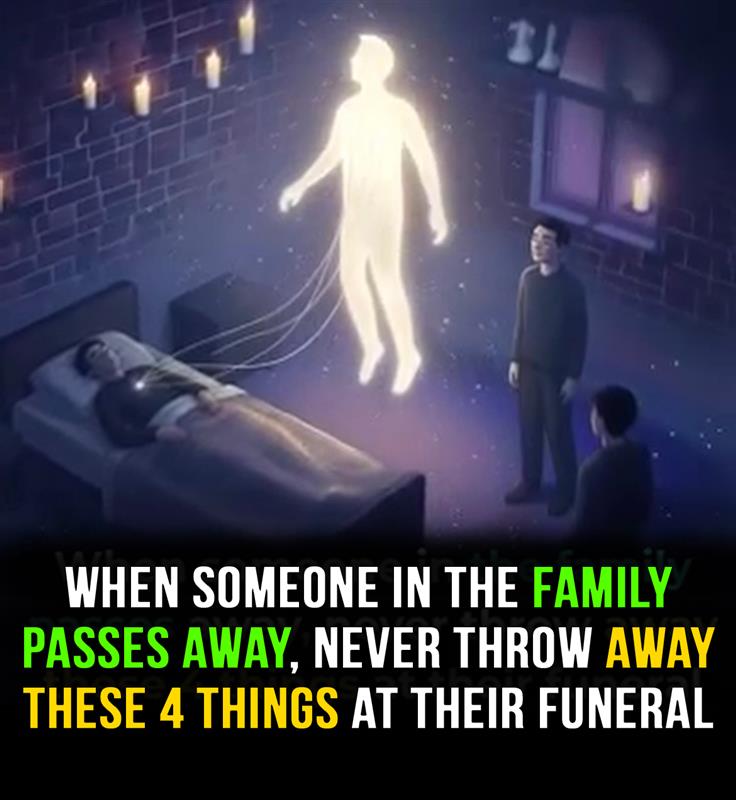When a family experiences the loss of a loved one, the emotional weight of grief can make every decision feel overwhelming. Even simple tasks—such as going through personal belongings—can become emotionally complicated. In moments like these, it is easy to rush or make decisions driven by the desire to tidy, simplify, or move forward as quickly as possible. Yet many people later discover that certain items they discarded too soon were things they deeply wished they had kept.
Taking time to pause, reflect, and consider the emotional significance of certain belongings can prevent future regret. Some objects, even the simplest ones, carry the essence of a person’s life—capturing their habits, their handwriting, their voice, or their presence in a way no digital item can fully replace. For families, these items often become touchstones of memory, connection, and comfort.
Below are four categories of items families are encouraged to hold onto, not because of material value, but because of the emotional and historical meaning they often carry.
Personal Letters and Handwritten Notes

In an increasingly digital world, handwritten letters and personal notes stand out as some of the most meaningful keepsakes a person can leave behind. These pieces of paper carry the unique rhythm of someone’s handwriting—the curves of each letter, the pressure of the pen, or the familiar phrasing that only they used. Even short messages, such as a note left on a refrigerator or a birthday card from years ago, take on new emotional weight as time passes.
Many people who have gone through the process of sorting belongings later express regret that they discarded letters or cards too quickly. What initially seemed insignificant often becomes cherished later, especially when family members want to feel close to the person who is no longer present.
These handwritten pieces are valuable not only for emotional reasons but also for family history. A written recipe in someone’s handwriting can feel like a connection to shared meals and traditions. A personal letter may reveal stories or memories that younger generations have never heard. A small note or message becomes a tangible piece of a person’s voice—a reminder of how they communicated their care, humor, or encouragement.
Rather than discarding these items during the early stages of grieving, families may benefit from gathering them in a safe place. They can be stored in a memory box, shared among relatives, or preserved digitally for future generations. Often, these handwritten pieces become some of the most treasured family keepsakes.
Family Photographs and Personal Recordings

Photographs and recordings—whether printed, digital, or stored on older devices—are some of the most irreplaceable items a person leaves behind. They capture expressions, moments, and interactions that memory alone cannot fully preserve. Even if certain photos seem repetitive, poorly lit, or out of order, they may hold significance that becomes clearer with time.
Photos serve as a visual timeline of a person’s life: childhood memories, family gatherings, milestones, and ordinary moments that become increasingly meaningful as the years pass. They also help younger relatives understand the family’s history and identity, offering glimpses into earlier generations.
Recordings, when available, carry an even more intimate connection. The sound of someone’s laughter, their voice during a conversation, or a short video clip from a special event can provide comfort and familiarity long after the moment has passed. For many families, these recordings become essential in preserving the emotional memory of a loved one.
Instead of discarding photos or leaving digital files unorganized, families may consider creating labeled albums, backing up digital images, or sharing curated collections with relatives. These steps ensure that the memories remain accessible and preserved for years to come.
Jewelry and Personal Accessories

While jewelry often holds monetary or decorative value, its emotional significance can be far greater. Items such as rings, bracelets, watches, or small accessories carry traces of daily life—objects worn during important events, celebrations, or simple everyday routines. Even items that show signs of wear can become treasures that evoke familiarity and closeness.
These objects frequently become meaningful heirlooms passed down through generations. A watch worn every day, a necklace worn during special events, or even a simple pin or brooch can represent tradition, continuity, and connection. Over time, such pieces often symbolize stories told within the family—who wore them, when, and why they mattered.
Personal accessories, such as a favorite wallet, a set of keys, or a pair of glasses, may also feel emotionally significant. While they may not be passed down as formal heirlooms, they often serve as gentle reminders of a person’s habits, routines, and presence.
Families who wish to honor these items can store them safely, incorporate them into memory boxes, or share them among relatives who feel connected to their meaning. Even if not worn or displayed, keeping these items preserves a tangible link to the past.
Important Documents and Certificates

Amid grief and the desire to organize belongings, important documents must be handled with care and kept securely. Items such as identification records, property documents, certificates, wills, and financial papers may be necessary for administrative purposes. These documents ensure clarity during the process of managing accounts, resolving legal matters, and handling family responsibilities.
Beyond their practical value, some documents also carry historical or genealogical significance. Birth certificates, marriage records, and educational achievements may tell a story that future generations can learn from. These items often help relatives understand a person’s life journey, accomplishments, and role within the family’s history.
Before discarding any paperwork, families should review documents thoroughly or consult professionals if needed. Storing the documents in safe, clearly labeled folders or digital archives helps ensure that nothing essential is overlooked. Even seemingly minor documents may prove important later, especially when settling affairs or documenting family history.
Preserving Memory with Intention and Care
Losing a loved one is emotionally challenging, and the process of sorting through personal belongings requires patience and compassion. While not every item can or should be kept, certain categories hold a deeper emotional and historical value that becomes clearer with time.
Handwritten notes preserve a person’s voice.
Photographs capture stories and moments.
Jewelry reflects personal identity and tradition.
Important documents provide clarity and history.
By approaching this process thoughtfully, families can ensure that the most meaningful pieces of their loved one’s life remain protected and appreciated. These items often become sources of comfort, reflection, and connection—reminders of the bonds that continue even after someone is gone.
Sources
-
AARP – How to Preserve Family Memories and Personal Belongings After Loss
-
The New York Times – Why Letters, Photos, and Heirlooms Matter in Family History
-
Smithsonian Magazine – The Cultural Importance of Archiving Personal Items and Documents


